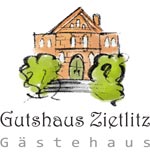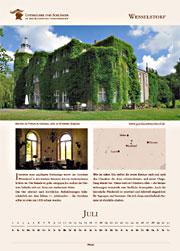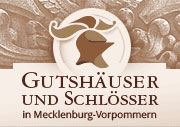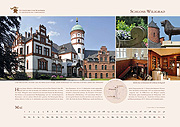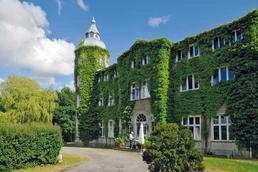Wesselstorf Manor
Like most other estates in Mecklenburg, Wesselstorf can look back on a history of several hundred years.
Wesselstorf we present in calendar 2016
(The calendar can still be ordered.)
One of the earliest documentary mentions occurs in ecclesiastical notes from the year 1232, which mention the delivery of tithes to Dargun Cloister by the villages Belitz and Woldelsowe (probably Wesselstorf). Beginning in 1460 we find in the archives descriptions of the estate plant and its owners, who—as was the rule rather than the exception—changed often over the centuries through sale and inheritance. Unusually, we find that from 1460 until the beginning of the 18th century, interrupted only by a brief Swedish interregnum during the Thirty Years’ War, the von Moltke (or von Moltken) family resided at Wesselstorf. Thereafter, apart from a few short-term owners, the knightly domain of Wesselstorf was in the hands of the von Bassewitz, von Grävenitz, and then again the von Bassewitz families, with the Bassewitz family in residence until the end of World War II. Thereafter Wesselstorf suffered the typical fate of all estates after 1945: quarters for refugees and decay, later reconstruction as rental apartments and public facilities such as a cooperative store, kindergarten, meeting hall, offices, etc. Over the years the garden and park became overgrown, valuable old stands of timber were turned to economic use, and the immediate vicinity of the house became dotted with small gardens common in the subsistence economy of the East German countryside. The estate plant that had remained largely intact until reunification was then further altered in the 1990s with the demolition of many historic agricultural buildings; remaining today, apart from the manor house, are the nearby stable for the saddle and work horses as well as the utility barn, which connects to the stable at right angles.
Since 1998 the house, the extant agricultural buildings, and a large part of the park have once more been in private hands. The entire ensemble was entered on the list of historical monuments in 2000.
Vacation in the Manor House
The house is charmingly situated on the edge of the village, the idyllic surroundings proceeding from a well-tended garden with numerous fruit trees through the partly restored park and out to the wider landscape. In the house stylishly appointed holiday accommodations are available to guests.
Owners prior to 1945 1945:
| 1739-1810 |
von Grävenitz |
| (1781)-1783 |
Imperial Counselor Friedrich Graf von Grävenitz |
| 1783-1786 |
Albertine Elisabeth Gräfin (Countess) von Grävenitz, wife of Lt. Gen. von Grävenitz; fief holder, Imperial Counselor Friedrich Graf (Count) von Grävenitz |
| 1786-1800 |
Chamberlain Carl August Georg Friedrich von Grävenitz |
| 1800-1808 |
von Grävenitz brothers |
| 1808-1810 |
Counselor of the Commission Koeve for the creditors of the Grävenitz family |
| 1810-1819 |
Master of the Hunt Johann Carl von Stein |
| 1819-1839 |
Hans Wilhelm Christian von Boeckmann |
| 1839-1841 |
Johann Heinrich Wrampe |
| 1841-1864 |
Hermann Burmeister |
| 1864-1881 |
Counts von Bassewitz; Adolf Bernhard Philipp Victor Graf von Bassewitz (vather) and Marshal of the Court Henning Adolf Franz Friedrich Carl Graf von Bassewitz (son) (see Prebberede and Wohrenstorf) |
| 1881-1895 |
Adolf Bernhard Philipp Victor Graf von Bassewitz and the heirs of Marshal of the Court Henning Adolf Franz Friedrich Carl Graf von Bassewitz (see Prebberede) |
| 1895-1899 |
Adolf, Henning, Ernst and Rudolf Grafen von Bassewitz (see Prebberede) |
| 1899-(1938) |
Captain of Cavalry Henning Graf von Bassewitz |
Gutshaus Wesselstorf
18195 Wesselstorf, Dorfstraße 21
Phone:
038205-68902
Fax:
030-7819435
Email:
buchungSPAMFILTER@gutshauswesselstorf.de
Url: www.gutshauswesselstorf.de
Keywords:
- Manor House
- Rostock
- Overnight Accommodation, Holidays
- national heritage protection
- private property
- von Moltke family
- von Bassewitz family
- von Stein family
- von Graefenitz family, von Graevenitz family
- Holidays in a Manor House
- calendar 2016
- park open to the public
- holiday apartment
- Tessin Department

